Ashton
Canal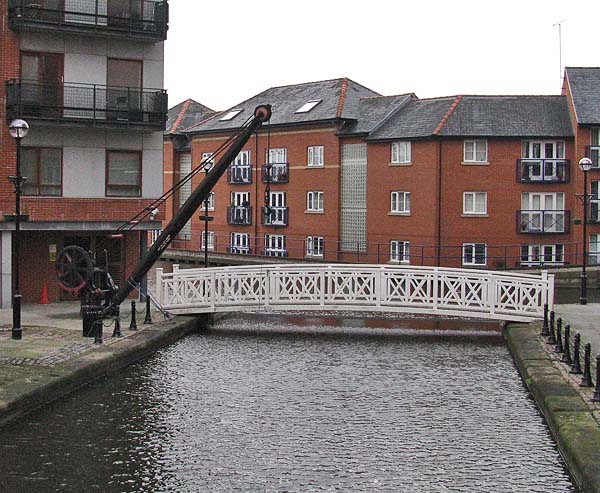 The Ashton Canal rises
from the Piccadilly Basin and travels for 6 miles
through Ancoats, Clayton, Openshaw, Droylesden and
Audenshaw before terminating in Ashton-under- Lyne.
The first section between Ashton and Ancoats was
completed in 1796. The final section from Ancoats
to the Piccadilly Basin was completed in 1798.
After initial success the Ashton Canal, like all canals,
came under pressure from the railways and road
transportation. It finally succumbed to the
financial pressure in 1945. The canal limped on
until in the 1960s it fell into a state of disrepair
that made it unnavigable. However, by 1974 the
canal had been restored for recreational use.
Below you can see the
canal as it passes the Hope Mill in Ancoats.
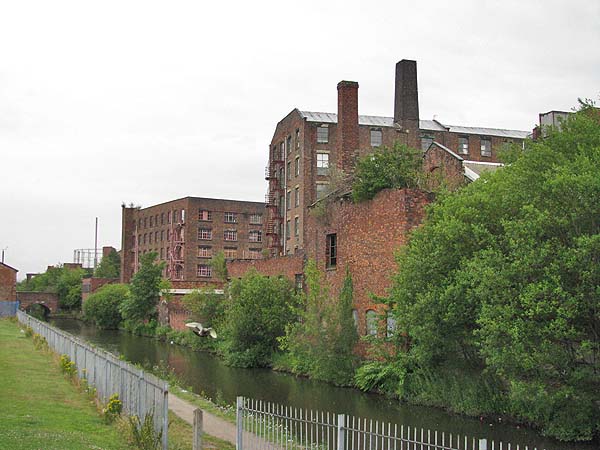 This stretch of the canal
now runs between the Milliners Quay apartments, on the
right below, and the Chips apartments on the
left. At this point you find the first of three
Ancoat's locks..
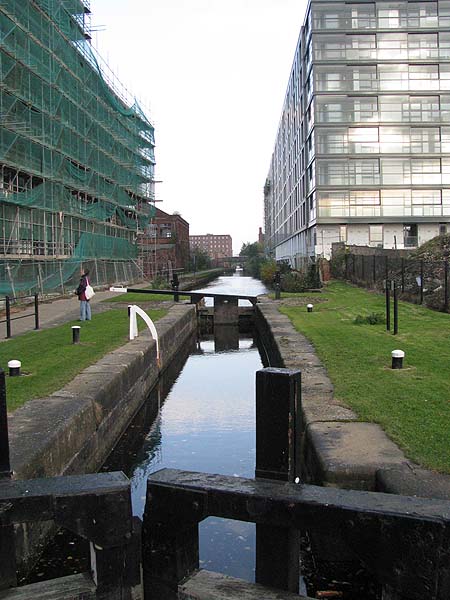 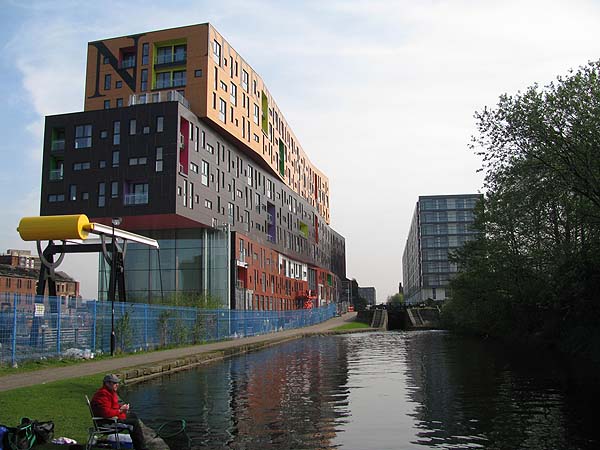 Below is Lock 2 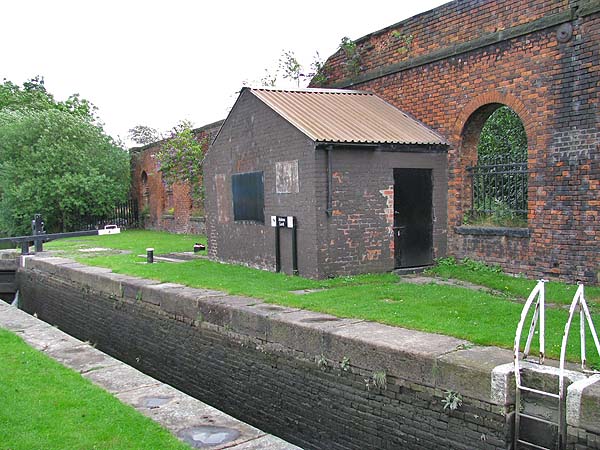 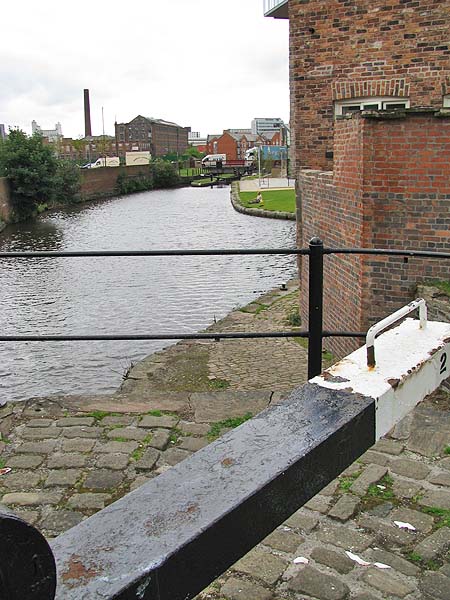 The former lock-keeper's cottage beside Lock 2. 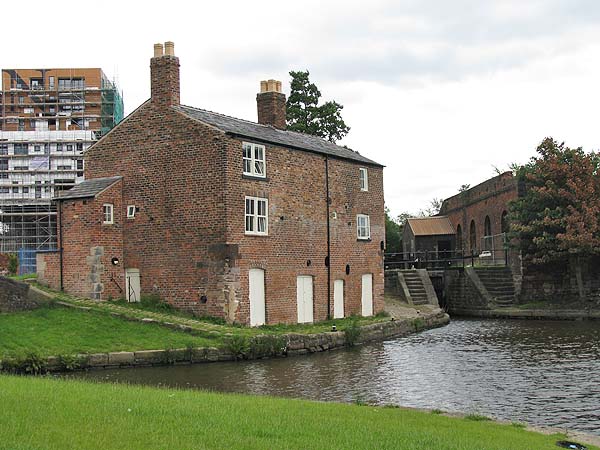 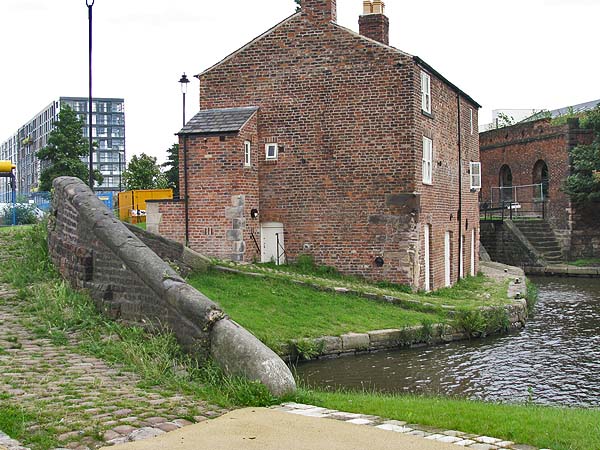 At Islington Wharf, Lock 1 lowers the canal enabling it to pass under Great Ancoat's Street. 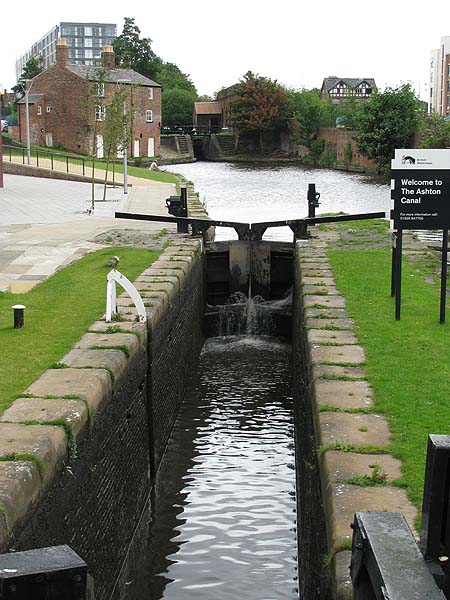 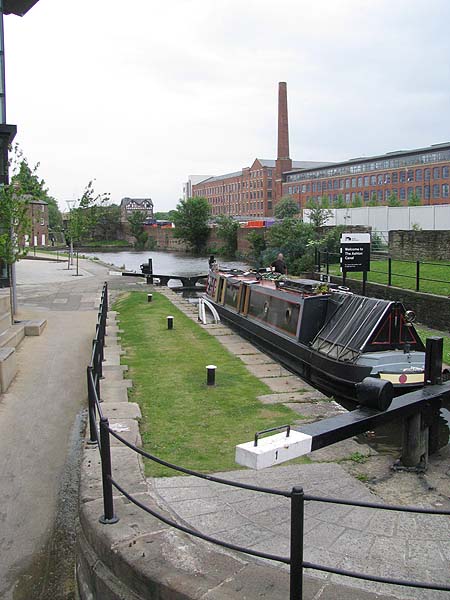 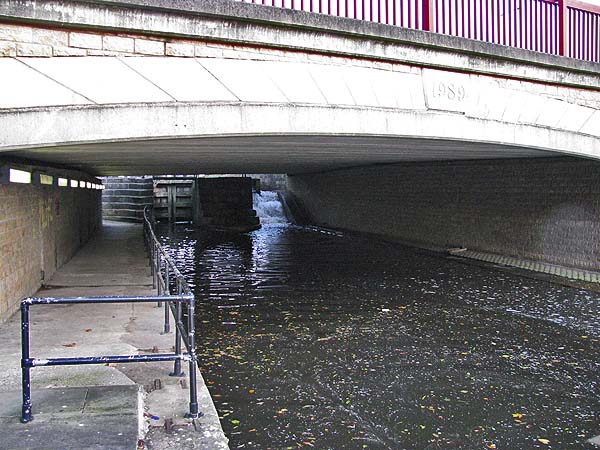 Once under Great Ancoat's
Street the canal enters Piccadilly Village where the
modern housing developments flank it.
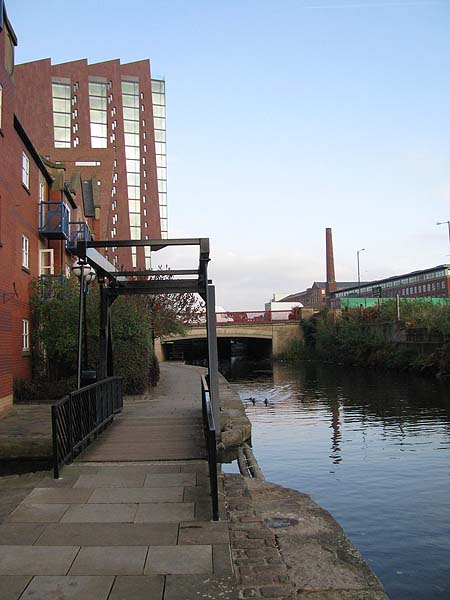 At this point, the canal opens up into the Thomas Telford Basin. 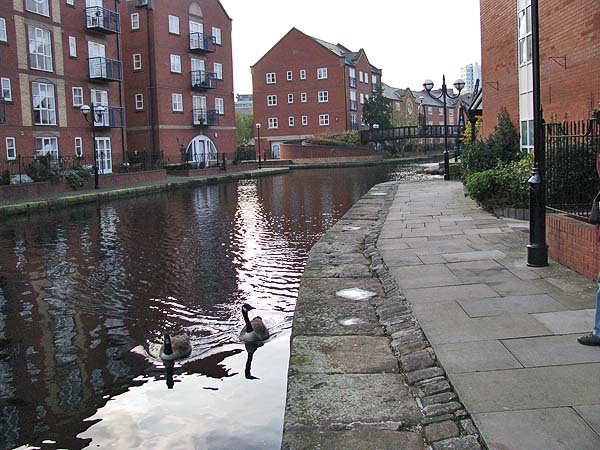 When the canal reaches
Store Street a unique skewed aquaduct carries the
canal across the street at an angle of 45
degrees.
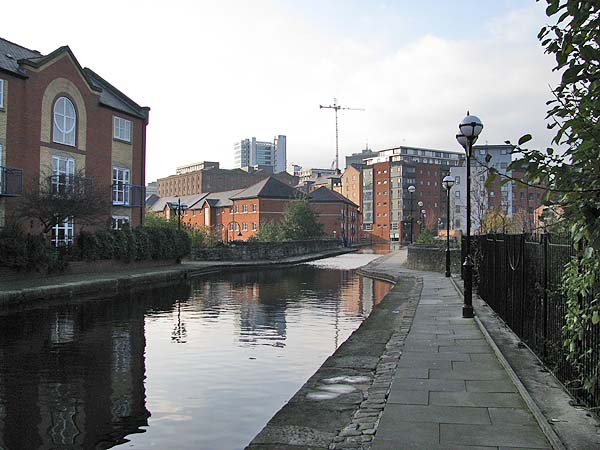 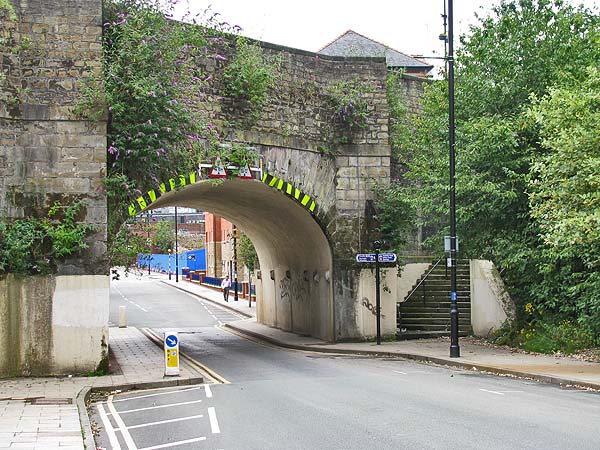 The canal finds its way into the Piccadilly Basin by travelling under Ducie Street.  |
Close Window